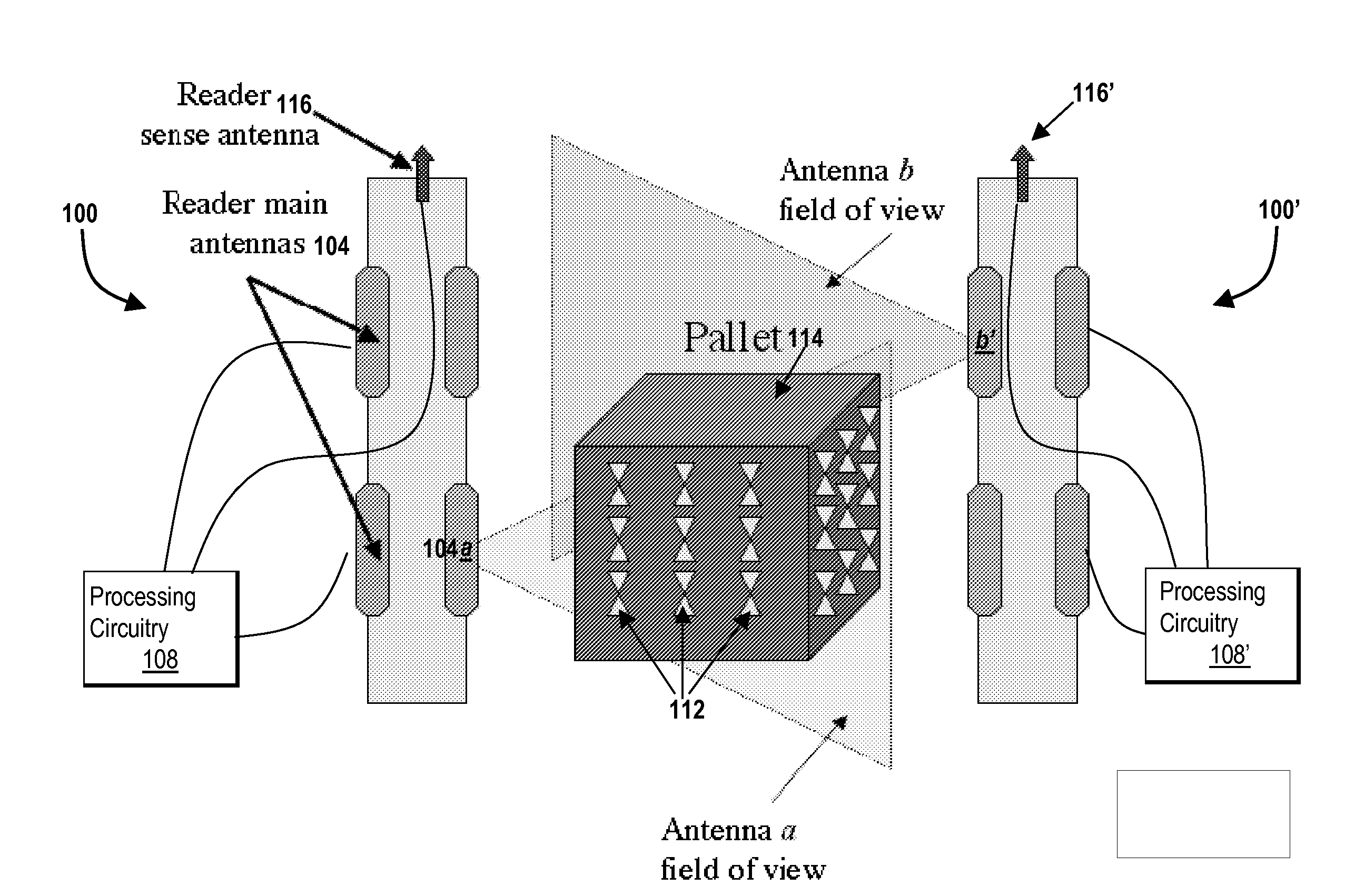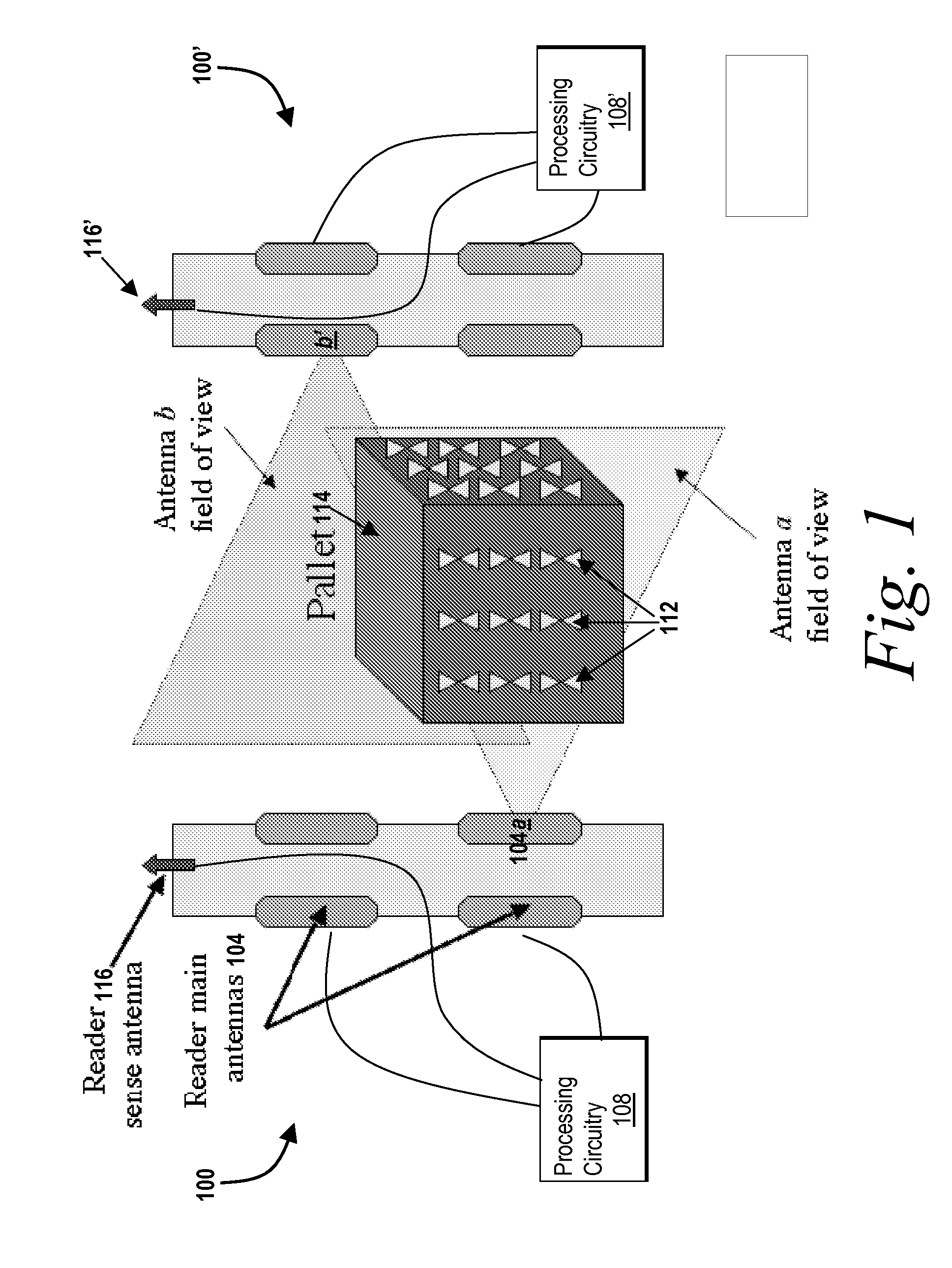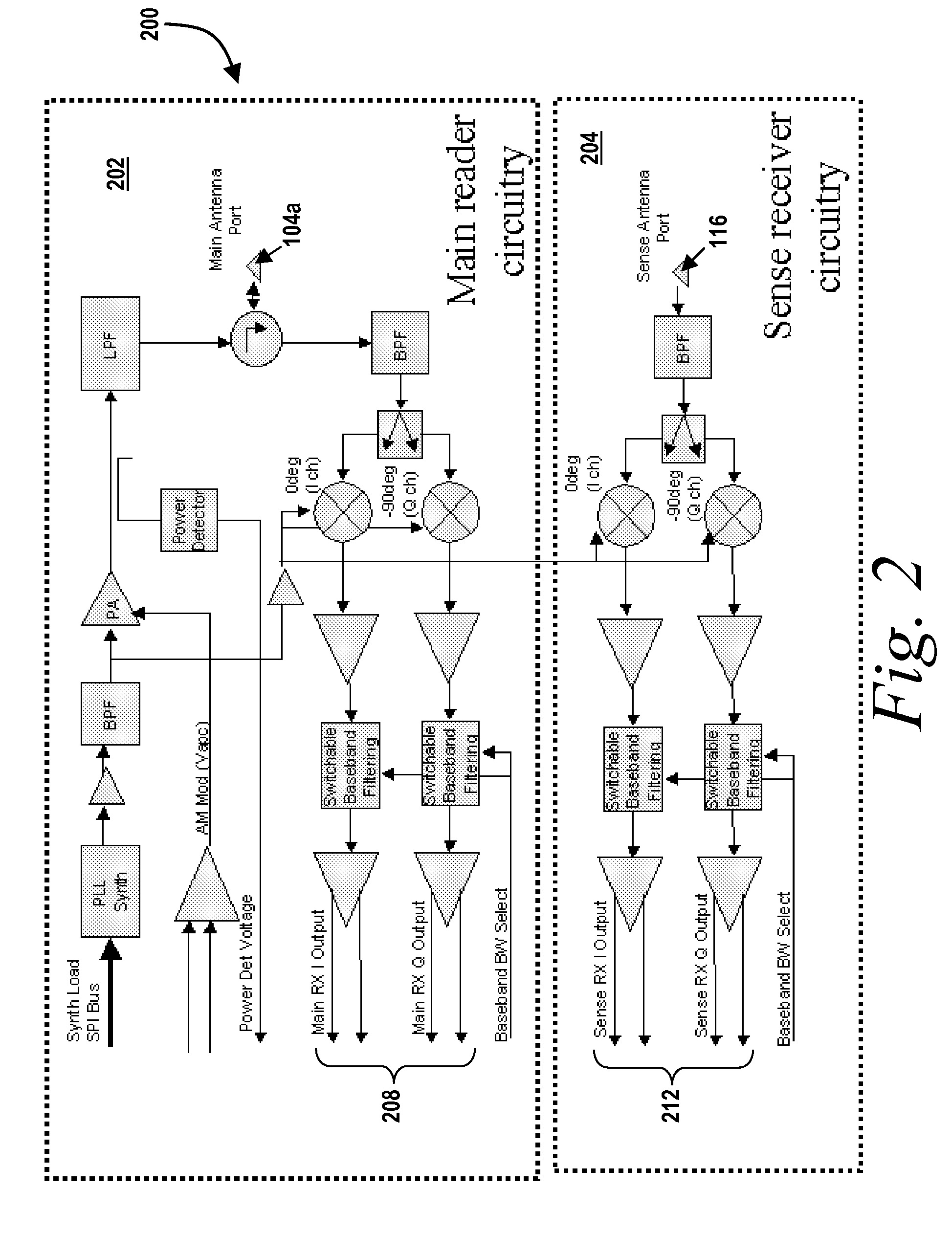Systems and methods for active noise cancellation in an RFID tag reader
a technology of active noise cancellation and tag reader, which is applied in the near field of read/write/interrogation/identification system, transmission monitoring, polarisation/directional diversity, etc., can solve the problems of reducing the sensitivity of the reader's receiver, first source of noise, and noise also present, so as to achieve the effect of mitigating the contribution of nois
- Summary
- Abstract
- Description
- Claims
- Application Information
AI Technical Summary
Benefits of technology
Problems solved by technology
Method used
Image
Examples
Embodiment Construction
[0026]With reference to FIG. 1, one embodiment of an RFID tag reader system 100 includes one or more antenna elements 104 in communication with processing circuitry 108. The antenna elements can be any type of an antenna element. For example, the antenna elements 104 can be, but are not limited to, patch antennas, waveguide slot antennas, dipole antennas, and the like. Each antenna element of the RFID tag reader system 100 can be the same type of elements. Alternatively, the RFID tag reader system 100 incorporates two or more different types of antenna elements 104. In some embodiments, one or more of the antenna elements 104 includes a plurality of antenna elements (i.e., an array of antenna elements). In some embodiments, the antenna elements 104 are multiplexed.
[0027]As shown in FIG. 1 in a typical installation, an additional RFID tag reader system 100′ is mounted near a first RFID tag reader system 100. In operation, one or more of the antenna elements 104 receives the response ...
PUM
 Login to View More
Login to View More Abstract
Description
Claims
Application Information
 Login to View More
Login to View More - R&D
- Intellectual Property
- Life Sciences
- Materials
- Tech Scout
- Unparalleled Data Quality
- Higher Quality Content
- 60% Fewer Hallucinations
Browse by: Latest US Patents, China's latest patents, Technical Efficacy Thesaurus, Application Domain, Technology Topic, Popular Technical Reports.
© 2025 PatSnap. All rights reserved.Legal|Privacy policy|Modern Slavery Act Transparency Statement|Sitemap|About US| Contact US: help@patsnap.com



